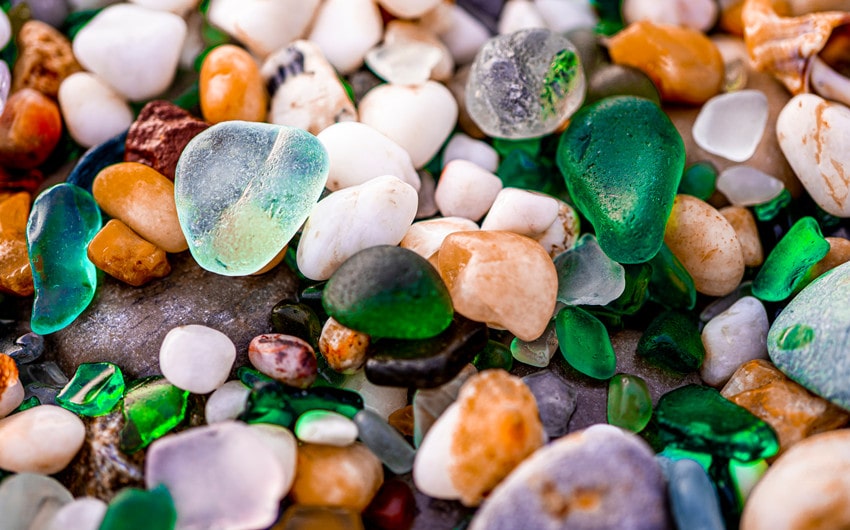A Complete Guide to Sea Glass: Formation, Types, and Uses
Sea glass is one of nature’s most beautiful surprises, turning discarded glass into smooth, colorful treasures washed up on the shore. Many people find joy in collecting these unique pieces, drawn to their mysterious origins and the calming pastime of searching for them along the beach.
Whether you’re looking to add a natural touch to your home decor or simply love a good beach walk, discovering these frosted gems can be both relaxing and rewarding. In this article, we’ll explore everything you need to know about these fascinating beach finds, from how they form to their creative uses.
How Sea Glass Is Formed
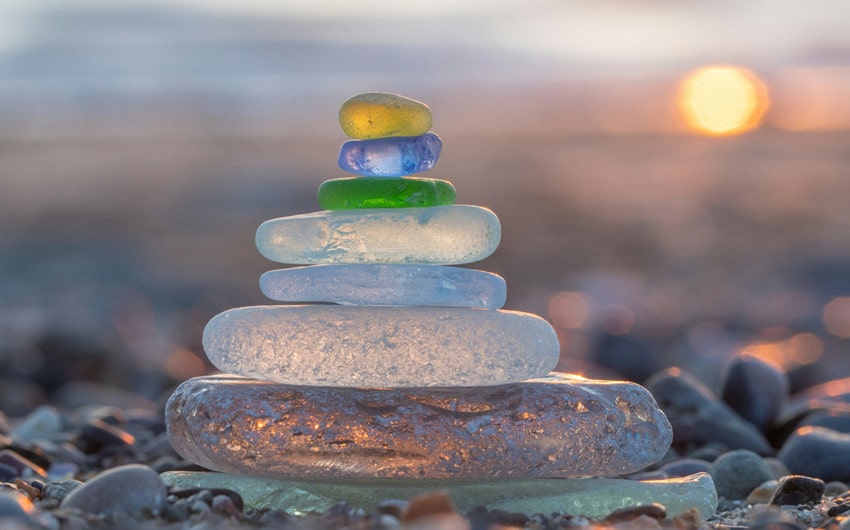
Sea glass is the result of a fascinating transformation that happens over time. When pieces of glass from bottles, jars, or other objects are discarded into the ocean, lakes, or rivers, they begin a long journey of change. The glass, often sharp and jagged at first, gets broken down by the relentless motion of waves, tides, and currents.
Over decades, or even centuries, these natural forces tumble and grind the glass against sand, rocks, and other debris. This process smooths out the sharp edges and gives the glass its characteristic frosted appearance.
The key elements in sea glass formation are time and nature’s abrasive materials. Sand plays a vital role, acting like a natural sandpaper that helps to soften and smooth the surface of the glass. In addition, constant exposure to water helps round off the edges and create that distinctive matte finish, which sets sea glass apart from regular glass. Depending on where the glass is located, it may also be subjected to changes in temperature and water chemistry, further altering its texture and color.
Not all sea glass is created equal, though. The quality and appearance of a piece can depend on factors like how long it has been in the water and the type of glass it originated from. Glass that has been tumbling for a longer period typically has a smoother, more polished surface, while recently broken glass may still retain some roughness. This natural weathering process is what gives sea glass its unique charm, as no two pieces are ever exactly alike.
Types of Sea Glass
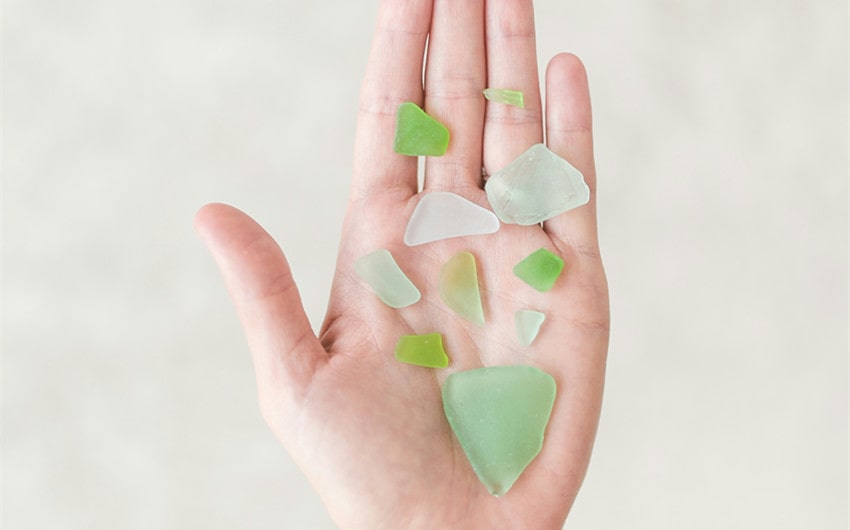
Sea glass comes in a wide array of colors and sizes, each telling a unique story about its origin and journey through the ocean. While all sea glass shares the smooth, frosted texture that comes from years of tumbling in the sea, the color of the glass can vary greatly, depending on the type of glass it originally came from. Some colors are much more common, while others are rare and highly sought after by collectors.
Common Colors
The most commonly found sea glass colors are green, brown, and white. These colors are often linked to everyday glass items like beer bottles, soda bottles, or clear glass containers.
- Green Sea Glass: One of the most abundant colors, green sea glass usually comes from bottles for soft drinks, beer, or wine. It’s often found along beaches and is considered a staple for sea glass collectors.
- Brown Sea Glass: This is another very common color, often originating from beer bottles, medicine bottles, or other types of containers. Brown sea glass, though not rare, can be found in varying shades, from light amber to deep brown.
- White Sea Glass: White or clear sea glass typically comes from old glass containers like jars, bottles, or windows. Over time, exposure to the elements gives it a soft, frosty appearance. Although it is one of the most common types of sea glass, white pieces can still be beautiful and highly versatile for craft and jewelry projects.
Rare Colors
Certain colors of sea glass are considered rare and can be much harder to find. These colors are often the result of older or more specialized glass items, making them treasures for collectors.
- Blue Sea Glass: Pieces of blue sea glass are quite rare and are typically linked to antique bottles for medicines, poisons, or decorative glassware. The shades can range from a pale sky blue to a deep cobalt blue, with cobalt being especially prized.
- Red Sea Glass: One of the rarest colors of sea glass, red pieces are often linked to old car tail lights, decorative glass, or even tableware from the mid-1900s. Red sea glass is highly valued by collectors because of its scarcity and vibrant color.
- Purple Sea Glass: While not as rare as red, purple sea glass is still highly sought after. It can come from old glassware, decorative pieces, or even vintage table settings. The purple hue usually deepens over time due to the glass’s exposure to sunlight.
- Orange, Yellow, and Pink Sea Glass: These colors are extremely rare and can be linked to decorative glass or unique items from the past. Finding these colors is considered a stroke of luck, and they are among the most valuable pieces in any sea glass collection.
Multi-Colored Sea Glass
Even more rare than single-colored pieces are multi-colored sea glass fragments. These are pieces of glass that contain two or more distinct colors, often from old decorative items or specialty glass objects. For example, a piece of sea glass might have swirls of green and white, or blue and purple. These pieces are not only harder to come by but are also highly prized for their unique beauty and artistic appearance.
Frosted or Matte Finish
The most prized sea glass has a distinct frosted or matte finish, which occurs as the result of decades of natural tumbling in the sea. Genuine sea glass takes years to develop this smooth texture and characteristic frosting. The longer the piece of glass has been tumbled by waves, the more even and frosted the surface becomes. This texture adds to the glass’s charm, making it different from artificially tumbled glass, which often lacks the same natural beauty.
Identifying Glass Origins by Color
The color of sea glass can also hint at its origins. For instance:
- Green and brown pieces may come from beer or wine bottles.
- White often originates from old jars or clear containers.
- Blue pieces could come from vintage medicine bottles.
- Red or orange sea glass might have started as old automotive glass or specialty decorative items.
Where to Find Sea Glass
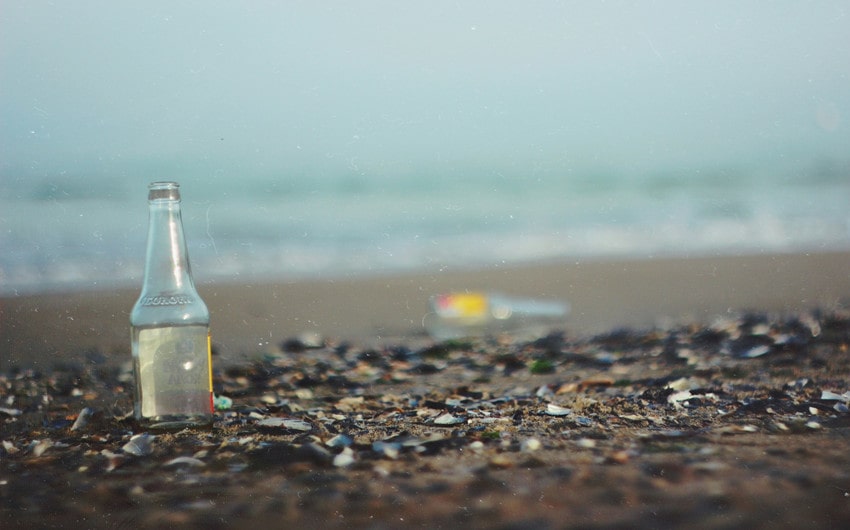
Finding sea glass is an exciting and rewarding experience for beachgoers and collectors alike. However, not all beaches are created equal when it comes to sea glass hunting. Sea glass is found in specific coastal areas where the conditions—both natural and human-made—are ideal for glass to be deposited, tumbled, and transformed over time. Here are the key factors that influence where you can find sea glass, along with some popular locations known for abundant sea glass discoveries.
Ideal Conditions for Sea Glass Formation
The best beaches for finding sea glass are those with a combination of rocky shorelines, strong waves, and a history of human activity that has led to glass being discarded into the water. Key factors that make a beach ideal for sea glass hunting include:
- Rocky or Pebble Shores: Beaches with plenty of rocks and pebbles help create the abrasive environment necessary for smoothing out glass. Sand alone doesn’t provide enough roughness, so areas with rocky or pebbly shorelines are prime spots for sea glass to form.
- Strong Wave Action: Beaches with powerful, consistent waves are great for tumbling glass. The constant movement of the water helps break down the sharp edges of glass and smooths it over time. Coastlines that experience regular tides or are exposed to strong ocean currents tend to produce more sea glass.
- Historic Dumping Sites: Unfortunately, many of today’s sea glass beaches were once used as dumping grounds for trash. While this isn’t a positive environmental legacy, it means that these areas have had glass in the water for decades, allowing it to be naturally shaped into sea glass. Old seaside towns, harbors, or areas near historic shipping lanes often have rich deposits of sea glass as a result.
Best Times to Find Sea Glass
Timing is also important when hunting for sea glass. Here are some tips on when you’re most likely to find the best pieces:
- After Storms: Strong storms churn up the ocean floor and bring more sea glass to the shore. After a storm, there is often an increase in the number of sea glass pieces washed up, making it an ideal time to go searching.
- Low Tide: Sea glass is more likely to be visible when the tide is low. During high tide, many pieces can be hidden beneath the waves, so exploring at low tide increases your chances of finding uncovered sea glass along the shore.
- Early Mornings: If you want to find the best sea glass, it’s a good idea to get to the beach early in the morning. This way, you’ll have a chance to search before other collectors arrive and before the day’s tide comes in.
Popular Locations for Sea Glass Hunting
There are several beaches around the world that are famous for their abundant sea glass, and they attract collectors from far and wide. Here are some of the best-known spots:
- Fort Bragg, California (Glass Beach): Perhaps the most famous sea glass beach in the world, Glass Beach in Fort Bragg was once the site of a town dump. Over decades, discarded bottles and glass were worn down into colorful sea glass that now covers the shore. This beach is a must-visit for sea glass enthusiasts, though much of the glass has been collected over the years, so finding rare pieces can be more difficult.
- Seaham, England: Located on the northeast coast of England, Seaham Beach is famous for its multi-colored sea glass. Much of the glass comes from an old glass factory that used to discard leftover glass into the sea. As a result, you can find stunning, vividly colored pieces here that are highly prized by collectors.
- Mackeral Cove, Rhode Island: Known for its abundance of green, white, and brown sea glass, Mackeral Cove is a popular destination for sea glass hunters in the northeastern United States. Its rocky shoreline and strong waves make it an ideal spot for finding beautiful, well-worn pieces.
- Hawaii: Hawaii’s volcanic coastline provides a wealth of rocky beaches where sea glass can be found. Oahu, in particular, has several beaches where sea glass is common, including Ka’ena Point and the beach near the abandoned garbage dump in Waimanalo.
- Puerto Rico: The beaches of Puerto Rico, especially those on the northern and eastern coasts, are known for their sea glass finds. The island’s strong currents and the presence of old glass bottles washed into the sea from nearby towns have made it a treasure trove for collectors.
- Bermuda: The beaches in Bermuda, particularly along the island’s western shores, are excellent spots for finding sea glass. The island’s shipping history means that glass bottles and other items often found their way into the sea, where they have been naturally smoothed and deposited on the beach.
The Value of Sea Glass
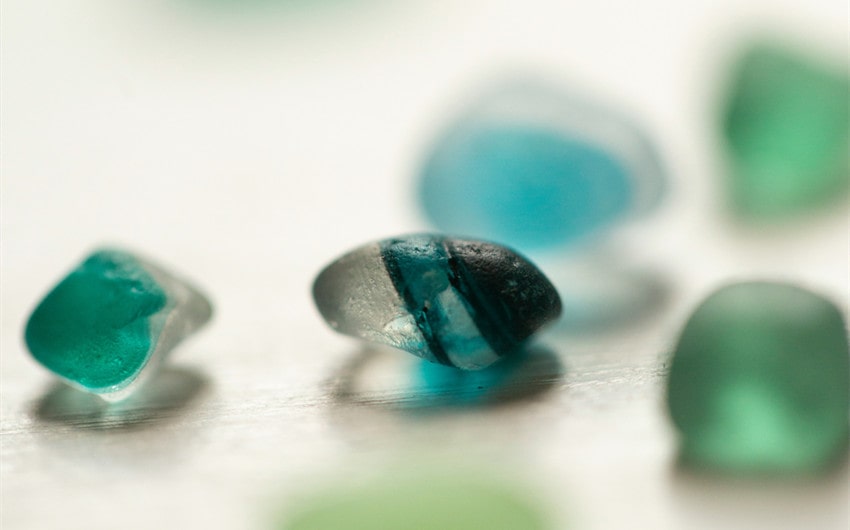
The monetary value of sea glass can vary widely, depending on factors such as color, rarity, size, condition, and use. Typically, more common colors like white, brown, and green fetch around $1 to $5 per piece, as they are often derived from everyday items like bottles and containers. These pieces are easier to find and therefore less valuable in the market.
However, rare colors such as cobalt blue, red, purple, or orange are far more valuable due to their scarcity. These rarer pieces can range from $20 to $50 or more per piece, particularly if they are in good condition and have a smooth, frosted texture from years of tumbling. Red sea glass, often coming from old car tail lights or vintage decorative glass, can command the highest prices due to its extreme rarity.
Multi-colored sea glass and exceptionally large pieces, which are much harder to find, can reach values of over $100 per piece. These unique fragments are highly prized by collectors and artisans alike because of their rarity and aesthetic appeal.
When sea glass is incorporated into jewelry or crafts, its value increases significantly. Handcrafted pieces like necklaces, rings, and earrings made from rare or well-formed sea glass can sell for $50 to several hundred dollars depending on the complexity of the design and the rarity of the glass. Custom-made, one-of-a-kind items made with multi-colored or large pieces of sea glass are especially sought after and can fetch premium prices.
In summary, the exact value of sea glass can range from just a few dollars for common pieces to several hundred dollars for rare, beautifully shaped, or artistically crafted sea glass items.
Creative Uses for Sea Glass
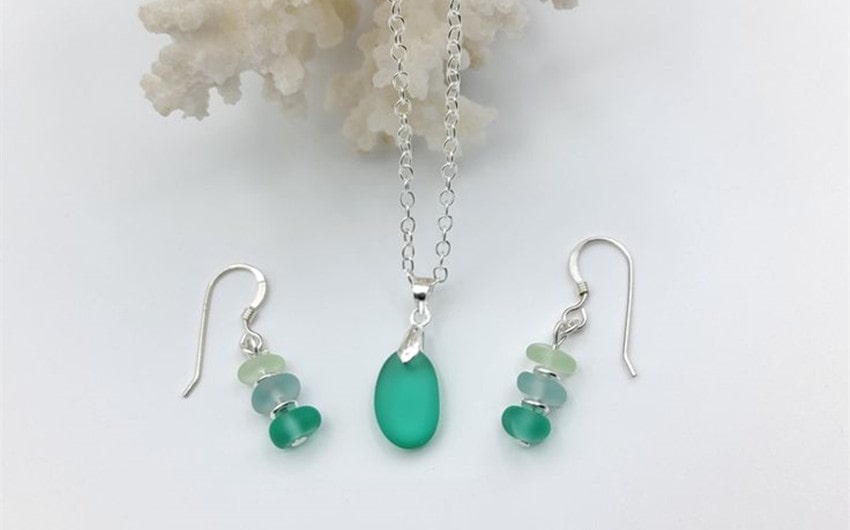
Image source: Pinterest
Sea glass’s smooth, frosted surface and diverse colors make it an excellent material for a variety of creative projects. Whether you’re crafting jewelry, decorating your home, or designing gifts, sea glass offers a unique way to bring nature’s beauty into your creations.
1. Jewelry Making
Sea glass is highly sought after for making handcrafted jewelry. Its natural shapes and colors, from green to rare shades like blue or red, make each piece stand out. Sea glass is often transformed into necklaces, rings, bracelets, and earrings, sometimes set in silver or wrapped in wire for a more rustic look. Whether you’re using small, delicate pieces for earrings or larger chunks for bold statement necklaces, sea glass adds an oceanic charm to any piece of jewelry.
2. Home Decor
Incorporating sea glass into home decor can give your space a coastal, peaceful vibe. Simple projects include decorating picture frames or mirrors by gluing sea glass around the edges, creating a unique and personal accent. Sea glass can also be used in vases or candle holders to reflect light and bring soft colors into your room. If you want to get more creative, consider making mosaics for tabletops or walls using various colors and shapes of sea glass.
3. DIY Crafts
Sea glass is perfect for a range of DIY craft projects that can be done at home. You can create beautiful wind chimes by stringing pieces together, allowing the sea glass to produce soft sounds as it sways in the breeze. During the holidays, sea glass can be shaped into ornaments or used as decorative elements for Christmas trees. Even simple projects like making colorful magnets for your fridge or office can add a personal touch to everyday items.
4. Event Decor
For beach-themed or outdoor events, sea glass can be used to add a touch of elegance and natural beauty. Use sea glass as part of table settings by scattering it around centerpieces or filling glass jars. It also makes for unique place card holders, providing guests with a small keepsake. In weddings, sea glass is a popular material for wedding favors, where guests can take home a little piece of the ocean as a reminder of the event.
5. Aquariums and Terrariums
Sea glass works well as a colorful addition to aquariums and terrariums. In aquariums, sea glass can be placed at the bottom, creating an eye-catching underwater landscape that’s safe for fish. In terrariums, sea glass can be layered around plants or placed as decorative elements to add texture and color, making your display more visually interesting.

